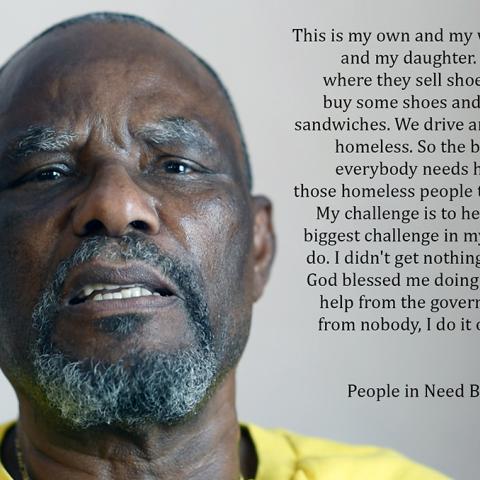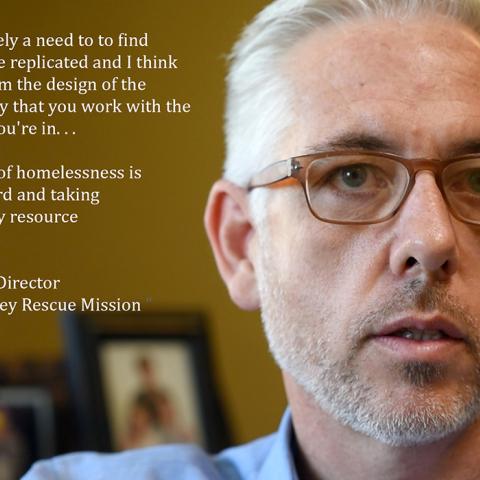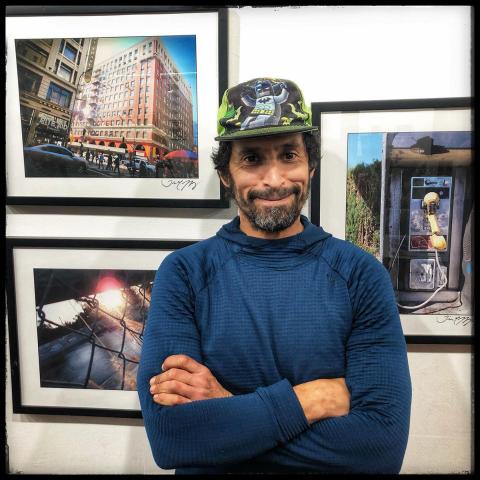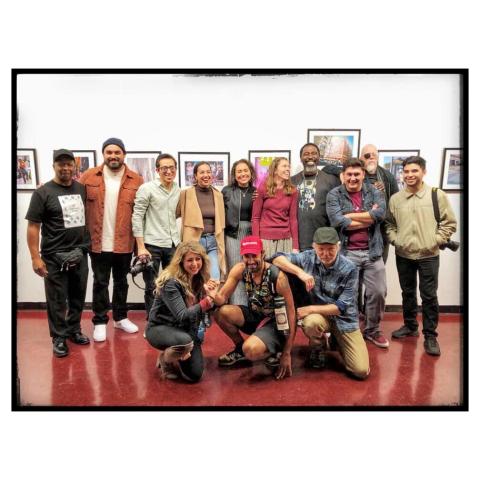Reframing Homelessness: The Visual Perspective of David Blumenkrantz
by Steve Kutay, Digital Services Librarian, CSUN - March 25, 2025
According to studies conducted by the Los Angeles Homeless Services Authority (LAHSA), homelessness increased by 70% from 2015 to 2023 in Los Angeles County. Recent public outcries to solve the issue have motivated politicians to act, but with little success. Despite significant increases in funding and outreach, only a small decline of roughly one quarter of one percent was achieved in 2024. This suggests that people are entering into homelessness at about the same rate that housing and other services can be provided. Complicating this is that public knowledge of the roots of homelessness is generally limited, ill-informed, and subjective, in which case their pressure to solve the issue only threatens to skew municipal initiatives toward the public interest rather than that of the displaced. Clearly, any effective and sustainable solution must address the fundamental causes, which include highlighting knowledge from individuals experiencing homelessness themselves.
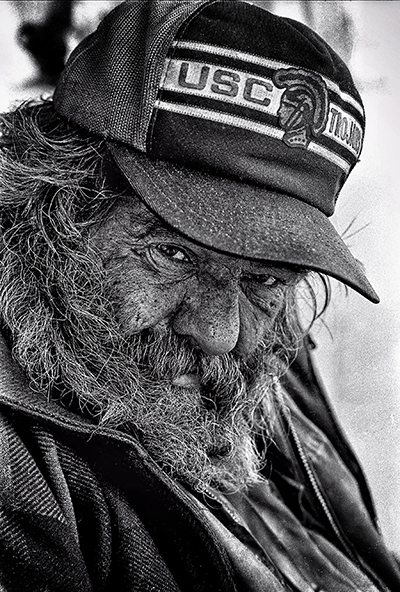 David Blumenkrantz, a journalism professor at California State University, Northridge since 2004, spent decades as a photographer documenting marginalized communities in the United States and Africa. His materials are now available for research in the David Blumenkrantz Collection at Special Collections & Archives. In addition to portraits, the Homeless Los Angeles series contains audio and video interviews of members of the community that reveal the stories of the disenfranchised, providing requisite context for researchers to understand homelessness from the inside. His approach to documentation exposes knowledge that escapes most data on homelessness, and works as a medium for the expression of agency within the community, as well as a source for challenging erroneous public assumptions from the outside.
David Blumenkrantz, a journalism professor at California State University, Northridge since 2004, spent decades as a photographer documenting marginalized communities in the United States and Africa. His materials are now available for research in the David Blumenkrantz Collection at Special Collections & Archives. In addition to portraits, the Homeless Los Angeles series contains audio and video interviews of members of the community that reveal the stories of the disenfranchised, providing requisite context for researchers to understand homelessness from the inside. His approach to documentation exposes knowledge that escapes most data on homelessness, and works as a medium for the expression of agency within the community, as well as a source for challenging erroneous public assumptions from the outside.
Blumenkrantz began photographing marginalized communities while in college. This later led him to become an advocate for the eradication of homelessness through the creation of visual stories he compiled of community members in Los Angeles. His objective was to advocate using, as Blumenkrantz describes, “respectful representation” that enabled his subjects to “speak for themselves”. Over time his documentary work served to shape his approach to teaching advocacy journalism that assisted students with developing skills to engage with these communities. His efforts in the classroom spawned multiple projects and exhibits that would bring public awareness by providing a window into the lives of those experiencing homelessness and reframing the issue through a lens of individualism and dignity.
Blumenkrantz’s work cultivated a number of significant outreach projects. Through collaboration with the San Fernando Valley Rescue Mission, the exhibit One of Us: Portraits and Personal Stories was shown at the Museum of Social Justice from May 2018 through January of 2019. Accompanying the photographic portraits were recordings of interviews made by participating community members. However, the scope of the exhibit also extended to social service workers, police officers, pastors, and policy makers through portraits and interviews of their own that when taken together addressed homelessness through diverse, holistic, and deeply personal experiences.
Expanding on the conversations facilitated by the One of Us exhibit, 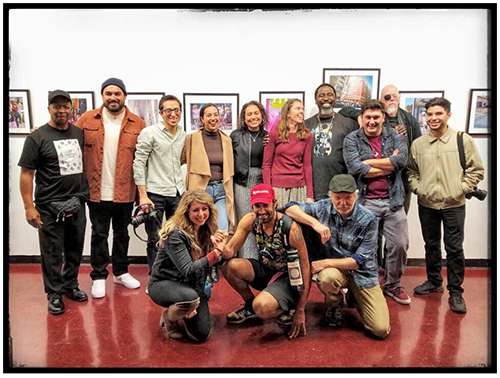 Blumenkrantz led a participatory photography workshop with his university students to teach members of the community basic photography and editing skills coupled with photographic theory and museum visits. This prepared the workshop participants to capture images of life on the street from their own perspectives. The resultant photographs were exhibited at the Museum of Social Justice in January of 2020 under the title, How We See It. Once again, the project brought together numerous people from various backgrounds so that both university and workshop students could gain insights from each other. The project proved to be an exceptional experience for all as well as a fertile ground for expression.
Blumenkrantz led a participatory photography workshop with his university students to teach members of the community basic photography and editing skills coupled with photographic theory and museum visits. This prepared the workshop participants to capture images of life on the street from their own perspectives. The resultant photographs were exhibited at the Museum of Social Justice in January of 2020 under the title, How We See It. Once again, the project brought together numerous people from various backgrounds so that both university and workshop students could gain insights from each other. The project proved to be an exceptional experience for all as well as a fertile ground for expression.
With the passing of the COVID pandemic, Blumenkrantz reignited momentum in this work by aggregating his early documentary photographs with those from previous projects to form an exhibit seated in the cultural center of homelessness in Los Angeles. With support from the Los Angeles Poverty Department, the exhibit, Enough is (never) Enough: Hard Truths and the People Who Live Them was shown at the Skid Row History Museum & Archive from September through November 2023. The opening reception featured Blumenkrantz and several participants of the How We See It project.
Blumenkrantz’s documentary work will continue to serve researchers, policy makers, and displaced community members as a trove of data offering first hand accounts essential to making real and sustainable progress on homelessness in Los Angeles.
Image Gallery
Post tagged as: bradley center, photographs, san fernando valley, los angeles
Read more Peek in the Stacks blog entries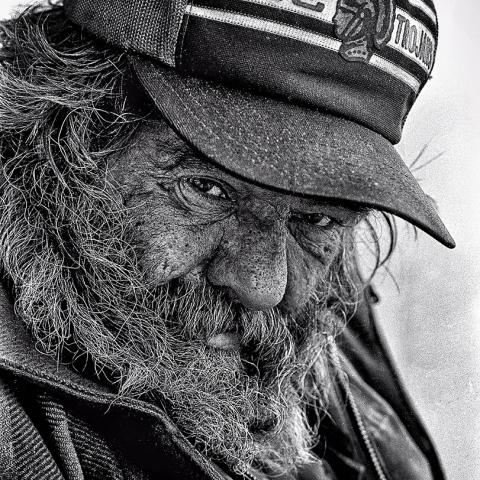
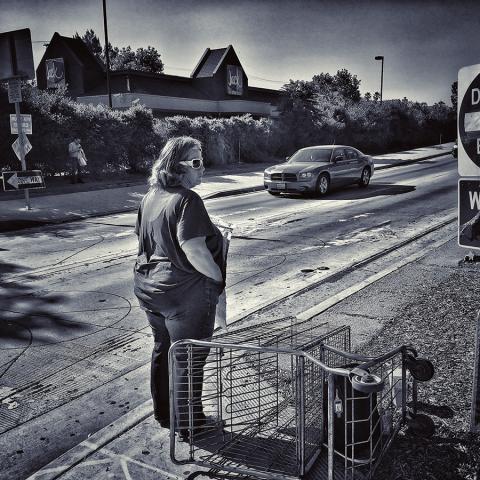
![Portrait of Patrick holding a sign, ca. 1990. Portrait of Patrick holding a sign that reads, “Perhaps tomorrow will be brighter than today. Yet, I do feel Bless [sic] today! Hunger is a problem. God bless all!”, ca. 1990.](/sites/default/files/styles/peek_in_the_stacks_gallery/public/uploads/sca/blog/gallery/Resize_3_PATRICK.jpg?h=242cd5c8&itok=et2Txb9S)
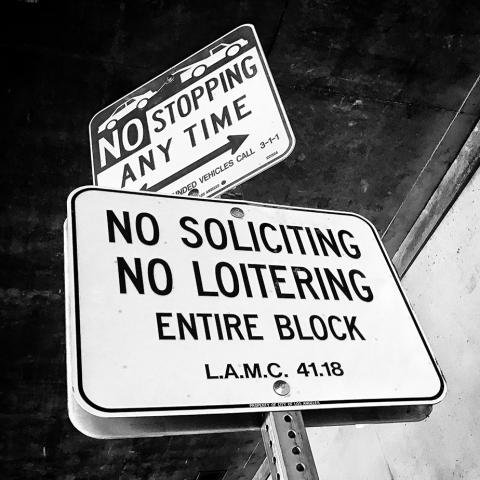
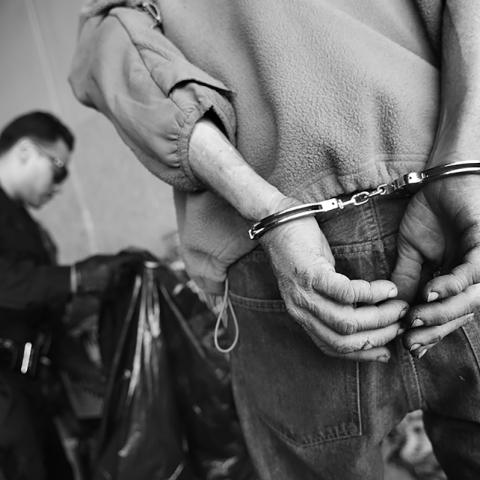
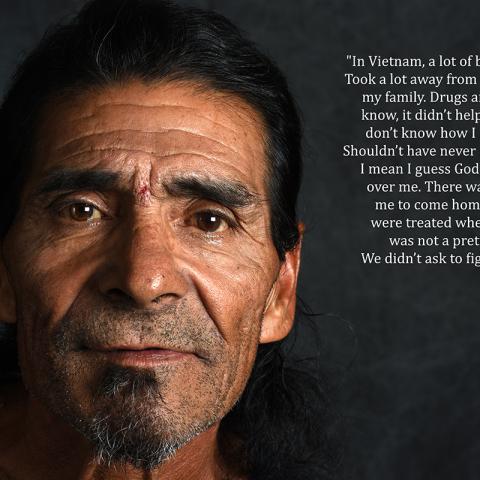
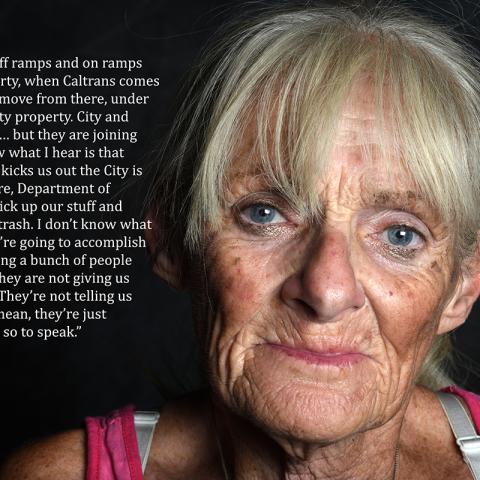
![Portrait of Manny Flores with a quote from the One of Us project, 2018. Portrait of Manny Flores with a quote from the One of Us project, 2018. The quote reads, “Homelessness, I’m getting to understand is a disease…It spreads and it’s something that if not treated properly, it gets worse and worse… My understanding is if you weren’t mentally unstable prior to being homeless, then homelessness causes PTSD [post-traumatic stress disorder]. It causes mental health issues that people may not even be aware of. And everything that homelessness breeds. So, my hope would be to help a f](/sites/default/files/styles/peek_in_the_stacks_gallery/public/uploads/sca/blog/gallery/Resize_8_MANNY.jpg?h=10d202d3&itok=ItlHIrzi)
